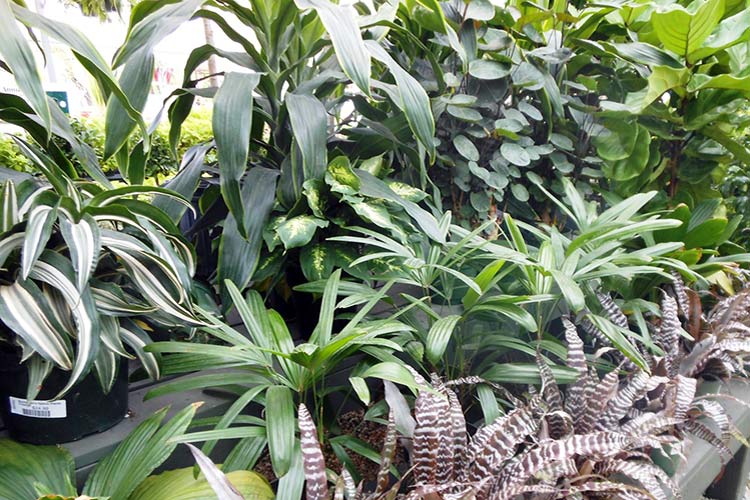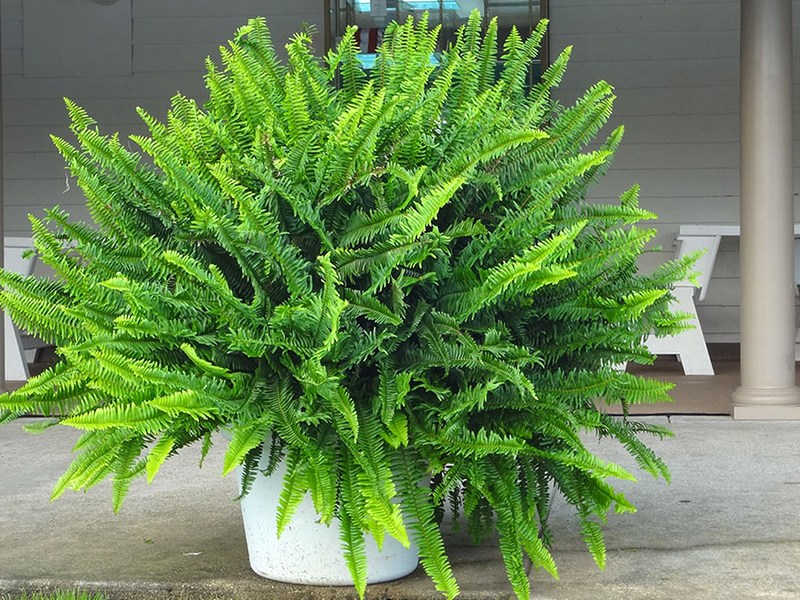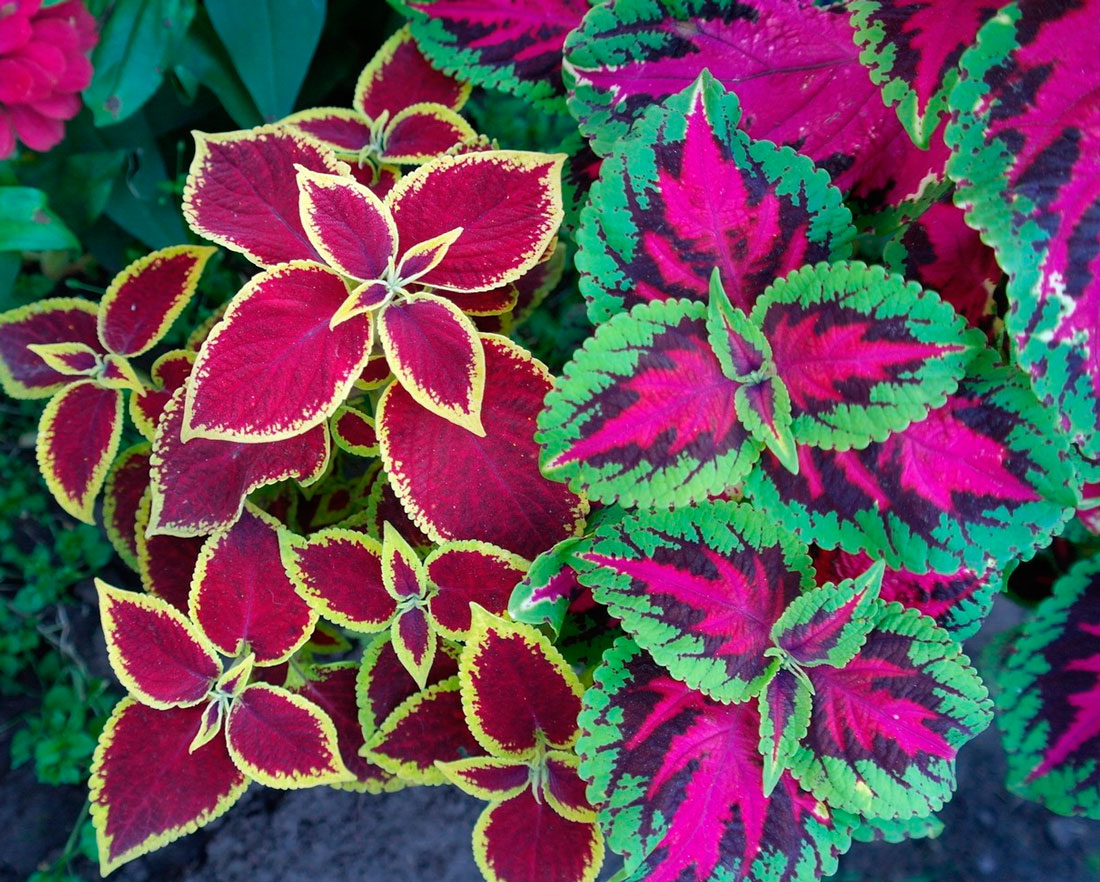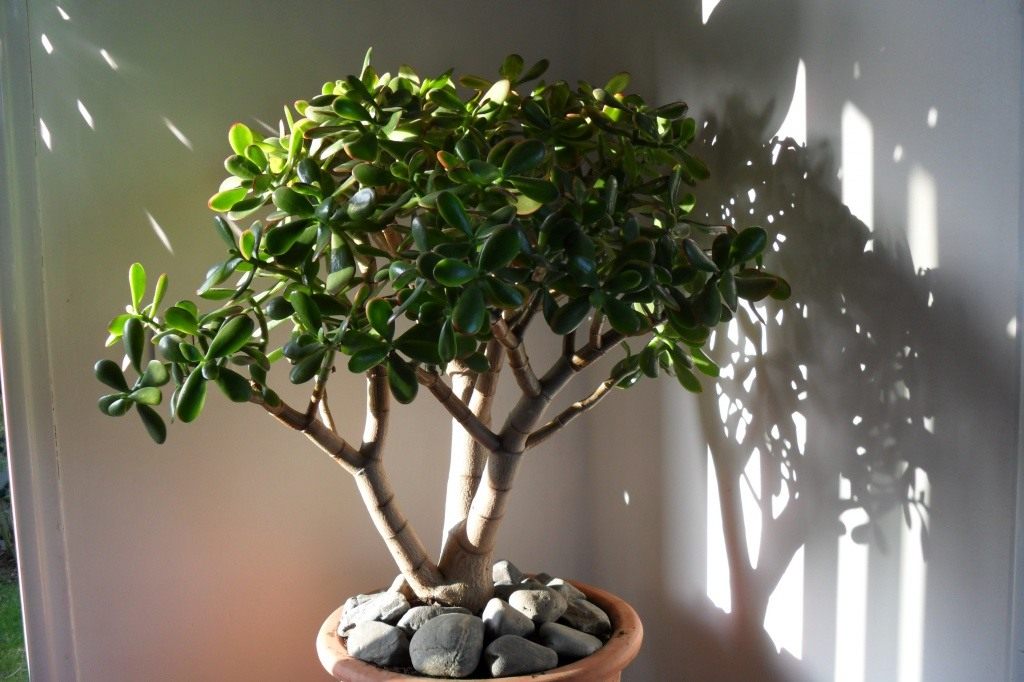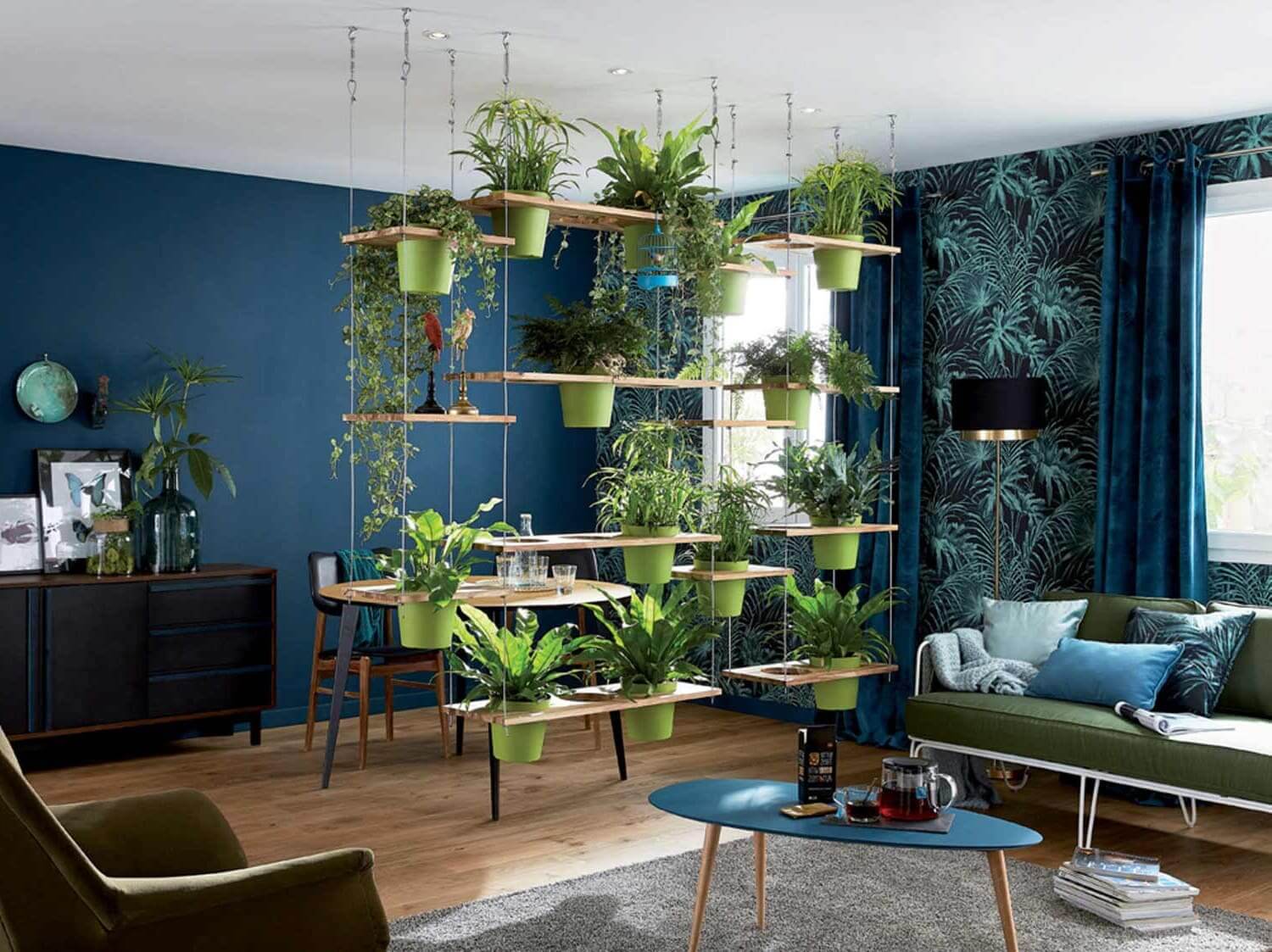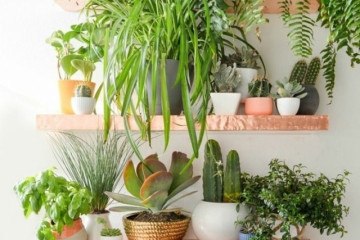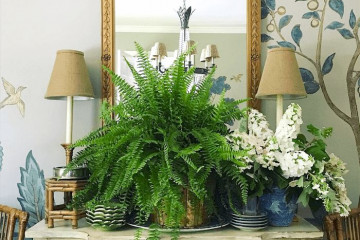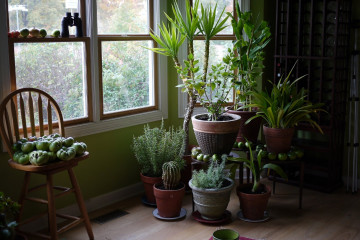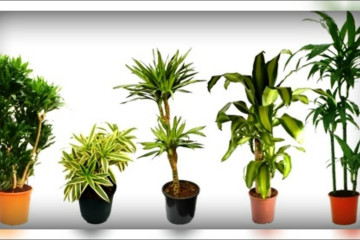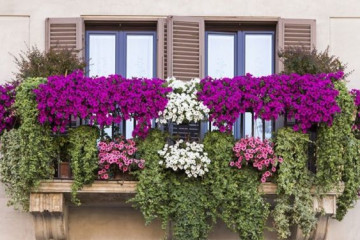Decorative deciduous indoor plants
Content:
Decorative deciduous indoor plants are very popular among flower growers. Many of them are unpretentious to conditions, easy to care for. They do not bloom or do not differ in attractiveness during this period, they are famous for the original leaves that have an unusual shape or shade.
Indoor plant classification
Depending on the appearance of the houseplant, its properties and characteristics, the following groups are distinguished:
- Blooming decorative. Participate in the creation of colorful compositions, pleasing to the eye at certain times of the year. Flowering depends on the season. Some then die, leaving the bulbs, which is typical for annuals, others lose their attractiveness until the next season;
- Deciduous decorative;
- Fruit. Experienced housewives create a real garden on the windowsill. Dwarf varieties of lemons, oranges, pomegranates, even avocados have been bred;
- Succulents. They are able to retain moisture for a long time. Notable representatives are cacti that can survive in arid regions.
The appearance of decorative deciduous plants
The color of the leaves changes depending on the light in the room, the season, there are different shades from rich green to purple. There are even hybrid varieties with black leaves. The form is also varied. Plants are bred with small and large leaves resembling lobes, some have jagged edges, others have wavy edges.
Groups of decorative deciduous plants
Decorative deciduous indoor plants are very diverse. Among them, one can single out groups of flora representatives, united by common characteristics.
Ferns
Ferns are vascular plants that appeared in ancient times. They serve as indicators of the atmosphere, reacting to dust, temperature, smoke. The fern lives comfortably at temperatures from 12 to 22 degrees, so the summer is better tolerated outside.
Plants love:
- wet soil and spraying;
- lit places, but not in direct sunlight.
Palm trees
Palms are tropical trees that are not difficult to care for. They prefer to be in partial shade. This is especially true of the varieties Neanta and Hovey, popular representatives of this group among flower growers. Withstand temperatures up to 10 degrees, this is the lower limit of values for winter.
The palms need to be drained so that water does not accumulate in the root area. Otherwise, stagnant fluid will affect their health. Spring and summer months require abundant watering, additional spraying.
Ampel plants
Ampelnye are climbing deciduous houseplants. These include ivy, tradescantia, chlorophytum, ficus, dichonda, which resembles a waterfall.
To create comfortable conditions it is necessary:
- Provide access to sunlight.It should be borne in mind that when in the shade throughout the day, the leaves will acquire a dull shade without a pronounced pattern. The constant presence of the sun contributes to the burning out of the leaf plate, it becomes light;
- Create optimal conditions for watering. Drainage is prepared to exclude the possibility of liquid stagnation.
Succulents
Succulents are distinguished by their ability to accumulate liquid in reserve and to exist comfortably in drought conditions. Among them are cacti, Kalanchoe, scarlet, and fat woman.
In spring, succulents require replanting, while the soil should consist of sand, earth and bark. In summer, the plant needs to be watered regularly, but not more than 2 times a week; in winter, in the absence of sunlight, watering should be done as rarely as possible. Provide light for growth and comfort. Plants are able to survive under the scorching sun, so shade is an unfavorable condition for them.
Temperature classification
Deciduous indoor flowers can be divided into groups, paying attention to their dependence on a certain temperature regime.
Heat-loving
Coleus belongs to the thermophilic flora. It is a plant with green and red leaves that resembles a nettle. The flower feels good in the hot season, but does not tolerate the scorching sun.
Of interest is ciffenbachia - a plant with large green leaves. In order for the flower to grow symmetrically, it is moved relative to the sun's rays. Ziffenbachia requires regular watering, spraying. It is better to be careful with it - the juice contains poisonous substances that burn the larynx and damage the eyes.
Frost resistant
There are few plants that can tolerate sub-zero temperatures. Succulents are considered the most resistant. In the winter season, they fall into a kind of hibernation and survive in a small minus. The main condition for this is the lack of watering.
The cereal calamus can withstand temperatures of minus 10 degrees. This is an extremely hardy perennial plant that is not popular with flower growers due to its unattractive appearance. It resembles sedge.
Cold-resistant
Plants that are comfortable at temperatures below 15 degrees are considered cold-resistant.
Sansevieria, better known as "pike tail", tolerates drafts and any lighting well. The main thing is not to keep it at subzero temperatures and avoid over-watering.
The famous dracaena, or domestic dragon, spends the winter in a cool, at a temperature of 10-12 degrees. In the warm season, it is important that the thermometer does not drop below 15 degrees.
Air humidity classification
Some indoor ornamental leafy plants get along comfortably in the absence of regular watering, others require constant soil moisture.
Moisture-loving
Moisture-loving flowers evaporate more liquid from leaves and soil. For them it is necessary to provide:
- drainage;
- constant hydration;
- spraying the leaves.
Indoor bamboo, or potonaterum, as a representative of the species, requires abundant watering even in winter. Prefers bright light, but can do without it.
The cereal calamus, famous for its unpretentiousness, is picky about moisturizing the soil and air. In its natural environment, it lives in swampy areas, near water bodies. Conditions characterized by high humidity must be ensured in the apartment as well.
Drought tolerant
Succulents perfectly tolerate dry air and are able to do without moisture for a long time.For example, a fat woman does not require watering more than once a month. Leaves do not need to be sprayed, wipe with a damp cloth as needed.
Ficuses carry dry air, require moderate watering, but it is imperative to dry the soil.
Euphorbia lives comfortably in rooms with dry air. The plant is unpretentious to soil moisture, it is necessary to water it 1-2 times a week, in winter it requires poor moisture. Do not spray leaves and stems.
Illumination classification
Some deciduous houseplants prefer bright sunlight, while others like to be in the shade.
Photophilous
Begonia and Kalanchoe are considered the most unpretentious. They live without proper attention under bright rays, since there is practically no need to care for the leaves.
Shade tolerant
Shade-tolerant plants will save flower lovers with north-facing windows. Many deciduous flora are able to do without the sun. The only thing is that some lose their variegated color, turn pale when they spend a long time in the shade.
Aspidistra is a decorative-leaved flower that will adapt to life in the complete absence of the sun, artificial light is enough for it. In the shade, you can settle "pike tail", fern, zamiokulkas.
Decorative foliage plants in the interior
In the interior, deciduous plants perform various functions:
- Visually change the space of an apartment, house. For example, palms visually reduce rooms, flowers in pots under the ceiling increase the height of the room;
- They create an accent on decorative items. Motley, unusual representatives of the flora draw attention to themselves, breathing life into the surrounding objects that seem imperceptible;
- Disguises unsightly details. They will help to hide chips, scuffs of decor items, furniture;
- Divide the space. To create landscaping zones, massive, tall or curly flowers are used. They come up with designs where they are located at different levels, representing a hedge;
Decorative deciduous indoor plants are very diverse. Many representatives of this group are quite unpretentious, so novice growers will cope with their cultivation. In addition to the aesthetic function, plants play a significant role in interior design.
